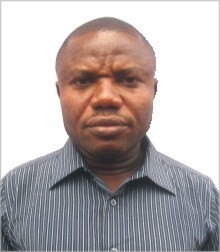Scientific Program

Ofonakara U
PhD pharmacology at the University of Lagos
Biography:
Dr Uzochukwu Ofonakara is a public health physician with MBBS, MPH, MSc (Epidemiology ),MSc (pharmacology) and is on his PhD pharmacology at the University of Lagos. He a senior resident at Federal Teaching Hospital Abakaliki and also the NPHCDA State coordinator for Delta State. He has presented at international conferences
Abstract
Introduction
HIV/AIDS continues to be a disease of public health importance especially in developing countries with high rate of unemployment, poverty and hunger. The aim of this study was to determine the pattern of presentation and factors associated with HIV/AIDS progression in a referral clinic in south eastern Nigeria
Methodology
A cross-sectional descriptive study was carried out among 349 HIV positive patients attending HIV clinic in Ebonyi state. Data was collected using anonymous pre-tested interviewer administered questionnaire and review of medical records. Odd ratios and 95% confidence intervals were computed and P values of < 0.05 were considered statistically significant.
Result
Three hundred and forty nine adult respondents attending ARV clinic took part in the study. Of the 349 subjects, 128(36.7%) were males and 221(63.3%) were females. The age range was 17 to 67 years with a mean and standard deviation of 40.40 ± 9.96 years. The mean BMI was 24.067( SD 5.105) and Waist Hip Ratio was 0.96, while the mean BP was 108.07/68.23 (SD 17.59/11.81. The majority of the respondents, 323(92.6%) had HIV 1 while 26(7.4%) had both HIV 1&2. Majority of the HIV positive patients 338(96.8%) were in clinical stage 2 followed by 10(2.9%) in stage 3 while 342 (98%) were on ART. The mean CD4 count of the respondents was 442.45 with SD of 252.664 while the mean ESR was 42.48 with SD 88.878 and mean viral count was 43.48 with SD of 88.87. The highest CD 4 count was among the age group 11-20 with 645.5±253.85 while the lowest CD4 count was among the age group 61-70 with CD4 count of 384.56±163.5. For marital status, the highest CD4 count was among the single with CD4 count of 460.35±258.13 while the lowest was among the married with CD4 count of 311.0±240.76. The CD4 count of urban dwellers 463.47±259.67 was also higher than that of rural dwellers 407.97±237.75.
Being married (p<0.005) and place of residence (p< 0.053) were significantly associated with worse disease progression.
Conclusion
Efforts targeted at raising standard of management of HIV/AIDS and care for people living with the disease is needed in rural communities with worse disease progression. Programs should be directed at older married males
- HIV/AIDS and Retroviral Diseases
- HIV Related Infections, Co-Infections and Cancers
- HIV/AIDS stigma, Discrimination and Lived experience with HIV
- HIV relation with Cardiovascular diseases and Aging
- HIV Diagnosis and Therapy
- HIV Drug Discovery, Research &Vaccines
- Viral, Bacterial, Fungal & Protozoan STDs
- STDs/STIs and Infertility
- Immunology of STDs & STIs
- Recent Advancement in HIV/AIDS, STDs and STIs
- Current Focus in Virology Research
- Policy, Advocacy& Community Engagement in HIV/ STI Research

